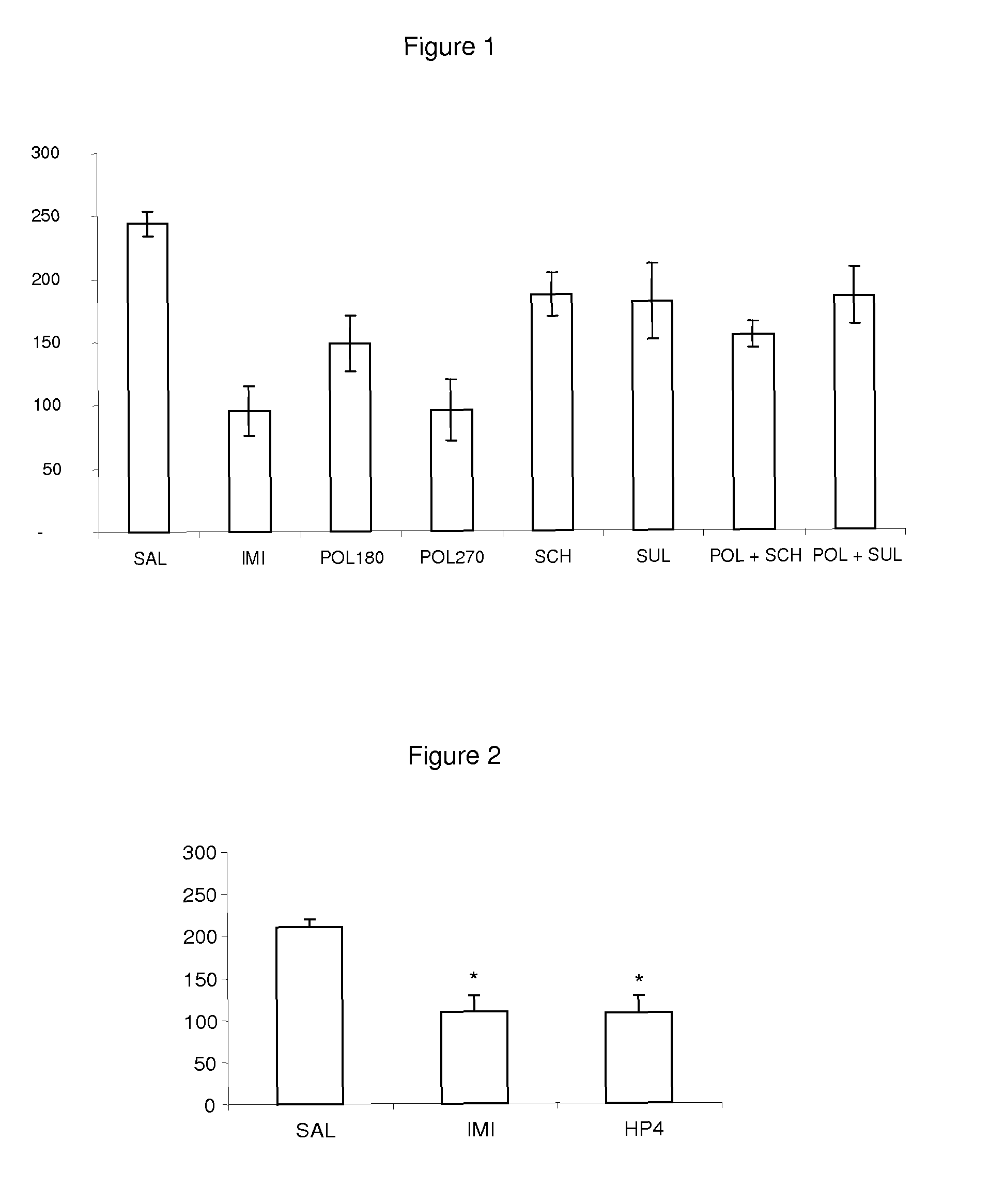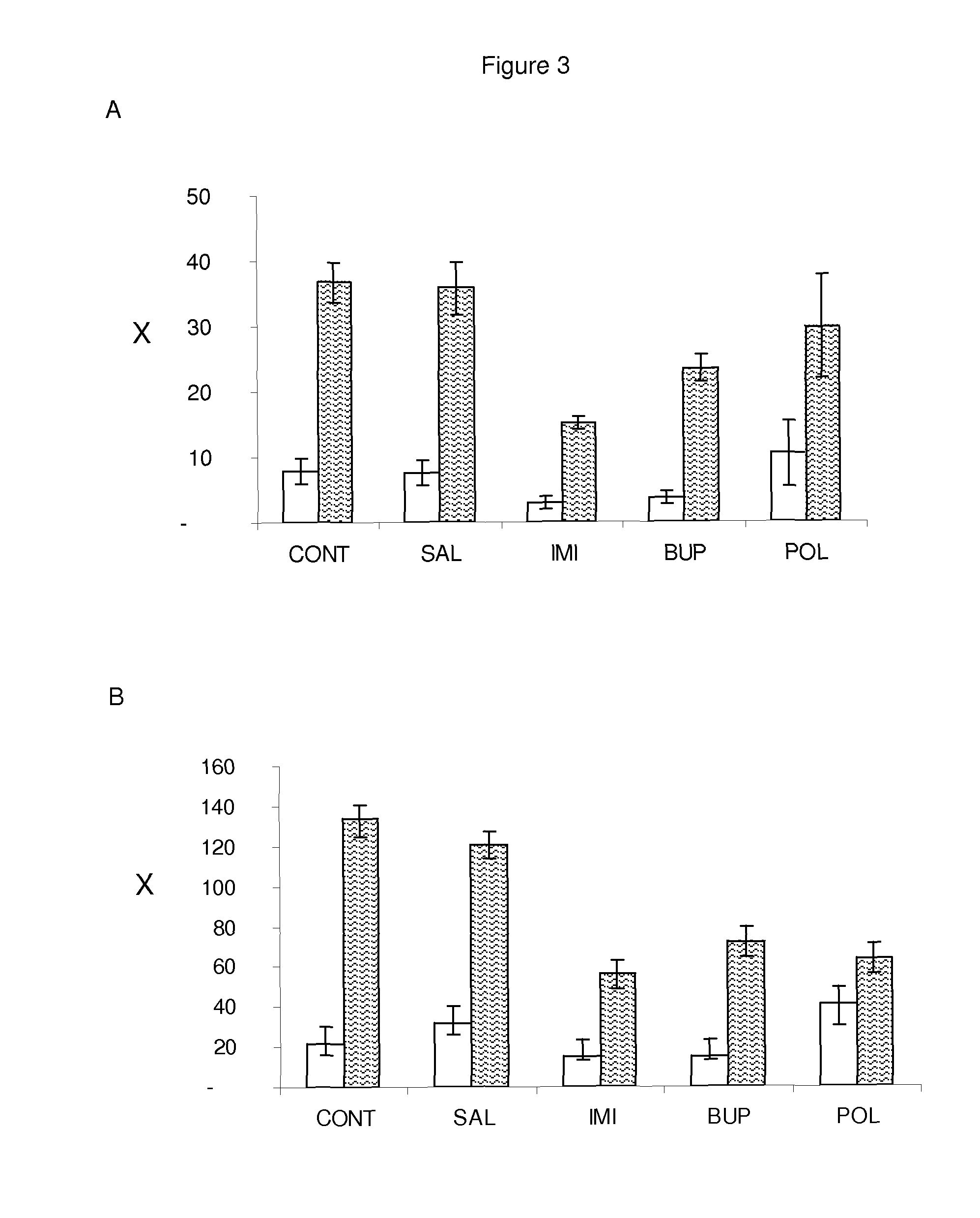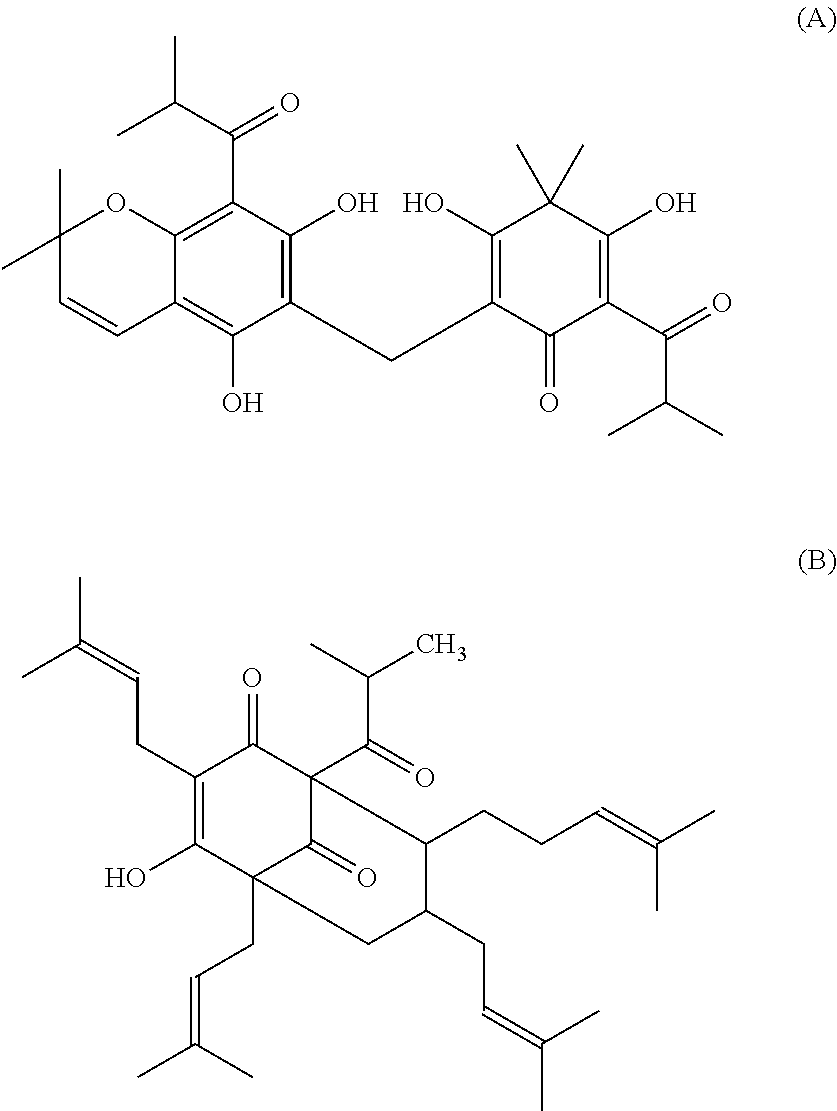Neuroactive plant extract from hypericum polyanthemum
a plant extract and neuroactive technology, applied in the direction of plant/algae/fungi/lichens, biocide, plant/algae/fungi/lichens ingredients, etc., can solve the problems of insufficient response of psychiatric patients to drug treatment, the exact mechanism of action of many of these drugs is still not fully understood, and all biochemical phenomena related to these diseases are far from fully understood. , to achieve the effect of inhibiting the reuptake of s
- Summary
- Abstract
- Description
- Claims
- Application Information
AI Technical Summary
Benefits of technology
Problems solved by technology
Method used
Image
Examples
example 1
Preparation of Plant Extract
Example 1.1
Plant Material and Chemical Study
[0097]The aerial parts of H. polyanthemum were collected in Caçapava do Sul / RS. The specimens of the plant material were prepared for identification and recorded in the ICN herbarium (Herbarium of the Botany Department—Instituto de Biociéncias—UFRGS) under number Bordignon et al. 1429 (H. polyanthemum). The material, immediately after collection, was selected, dried in an airy atmosphere, protected from direct light, and torn up manually.
example 1.2
Obtaining Cyclohexane Extract (POL)
[0098]The aerial parts, dried at room temperature and in the dark and torn up were subjected to a soaking operation (3×24 h) with cyclohexane at a ratio of 1 g of plant material per 10 mL of solvent. After each extraction, the mixture was filtered and the cake underwent the same operation twice.
example 2
Isolation and Identification of Chemical Constituents
[0099]The main components of POL were obtained by column chromatography using gradients of hexane / ethyl acetate, followed by thin layer chromatography on preparative silica gel GF254 using chloroform / hexane (3.5:1 V / V) as eluent. One of the major components was analyzed by magnetic resonance 1H, 13C (CDCl3, 400 MHz) and characterized as uliginosin B (HP4), a derivative of phloroglucinol and filicinic acid. The main components of POL and CLOR (chloroform extract) were obtained by thin layer chromatography on preparative silica gel GF254 using chloroform as eluent and analyzed by magnetic resonance 1H, 13C (CDCl3, 400 MHz). We identified three benzopyrans: HP1 (6-isobutyryl-5,7-dimethoxy-2,2-dimethyl-benzopyran), HP2 (7-hydroxy-6-isobutyryl-5-methoxy-2,2-dimethyl-benzopyran) and HP3 (5-hydroxy-6-isobutyryl-7-methoxy-2,2-dimethyl-benzopyran).
PUM
| Property | Measurement | Unit |
|---|---|---|
| Fraction | aaaaa | aaaaa |
| Fraction | aaaaa | aaaaa |
| Fraction | aaaaa | aaaaa |
Abstract
Description
Claims
Application Information
 Login to View More
Login to View More - R&D
- Intellectual Property
- Life Sciences
- Materials
- Tech Scout
- Unparalleled Data Quality
- Higher Quality Content
- 60% Fewer Hallucinations
Browse by: Latest US Patents, China's latest patents, Technical Efficacy Thesaurus, Application Domain, Technology Topic, Popular Technical Reports.
© 2025 PatSnap. All rights reserved.Legal|Privacy policy|Modern Slavery Act Transparency Statement|Sitemap|About US| Contact US: help@patsnap.com



